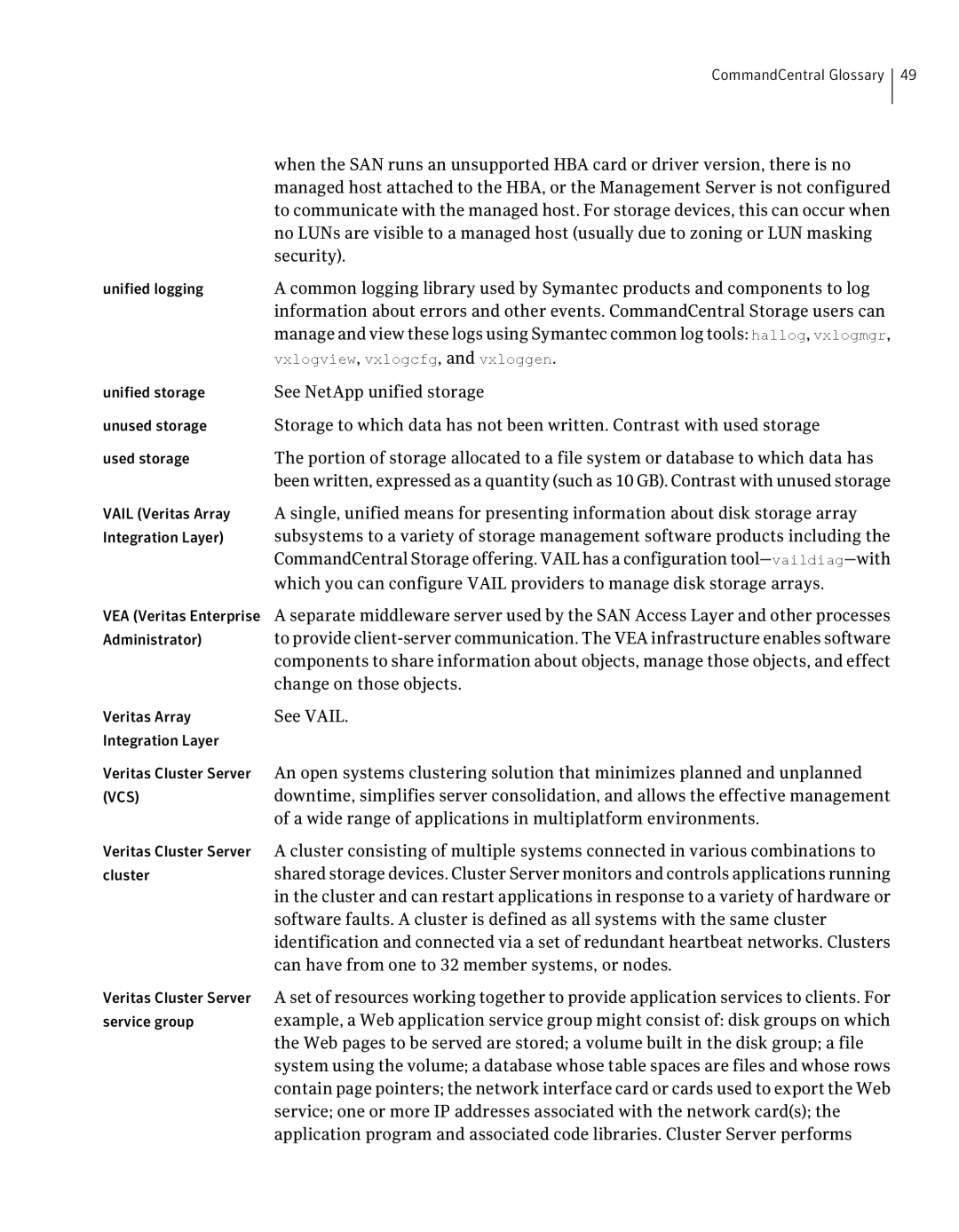CommandCentral Glossary ![]() 49
49
| when the SAN runs an unsupported HBA card or driver version, there is no |
| managed host attached to the HBA, or the Management Server is not configured |
| to communicate with the managed host. For storage devices, this can occur when |
| no LUNs are visible to a managed host (usually due to zoning or LUN masking |
| security). |
unified logging | A common logging library used by Symantec products and components to log |
| information about errors and other events. CommandCentral Storage users can |
| manage and view these logs using Symantec common log tools: hallog, vxlogmgr, |
| vxlogview, vxlogcfg, and vxloggen. |
unified storage | See NetApp unified storage |
unused storage | Storage to which data has not been written. Contrast with used storage |
used storage | The portion of storage allocated to a file system or database to which data has |
| been written, expressed as a quantity (such as 10 GB). Contrast with unused storage |
VAIL (Veritas Array | A single, unified means for presenting information about disk storage array |
Integration Layer) | subsystems to a variety of storage management software products including the |
| CommandCentral Storage offering. VAIL has a configuration |
| which you can configure VAIL providers to manage disk storage arrays. |
VEA (Veritas Enterprise A separate middleware server used by the SAN Access Layer and other processes
Administrator) to provide
Veritas Array | See VAIL. |
Integration Layer |
|
Veritas Cluster Server An open systems clustering solution that minimizes planned and unplanned
(VCS) | downtime, simplifies server consolidation, and allows the effective management |
| of a wide range of applications in multiplatform environments. |
Veritas Cluster Server A cluster consisting of multiple systems connected in various combinations to
cluster | shared storage devices. Cluster Server monitors and controls applications running |
| in the cluster and can restart applications in response to a variety of hardware or |
| software faults. A cluster is defined as all systems with the same cluster |
| identification and connected via a set of redundant heartbeat networks. Clusters |
| can have from one to 32 member systems, or nodes. |
Veritas Cluster Server A set of resources working together to provide application services to clients. For
service group | example, a Web application service group might consist of: disk groups on which |
| the Web pages to be served are stored; a volume built in the disk group; a file |
| system using the volume; a database whose table spaces are files and whose rows |
| contain page pointers; the network interface card or cards used to export the Web |
| service; one or more IP addresses associated with the network card(s); the |
| application program and associated code libraries. Cluster Server performs |
